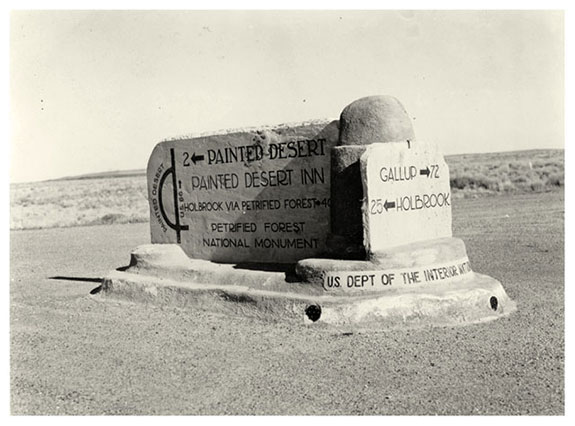
In 1926, the Beale Road was divided into northern and southern routes, the northern route established as Route 66. Route 66 was the first major paved highway to travel through the area. Also known as the “Mother Road,” Route 66 is one of the most famous roads in American culture. Petrified Forest is the only National Park to contain a section of Route 66 where it bisected the main park highway. It contained more than 2,200 miles of open road lined with numerous motels and restaurants, as well as the Painted Desert Inn.

Route 66's demise came when the public began lobbying for quick mobility and improved highways which increased during President Eisenhower's second term. Because the president was impressed with the "superlative system of German national highways," Congress passed the Federal Aid Highway Act of 1956, which provided a financial umbrella to underwrite the cost of the national interstate and defense highway system. In the late 1950s, Route 66 was bypassed by what is now Interstate 40. By 1970, nearly all its segments were bypassed by the new interstate and in 1984, it completely succumbed when the final section was bypassed. The route has remained lined with abandoned telephone poles and a park exhibit which marks the historic intersection.



Credit to the following sites:
http://www.nps.gov/pefo/historyculture/historic-route-66.htm
http://www.petrifiedforestbookstore.com/route-66/
http://route66news.com/2011/09/09/land-deal-expands-petrified-forest-national-park/
http://www.nps.gov/pefo/photosmultimedia/archeology-gallery.htm
http://hwyfly.blogspot.com/2010/10/roys.html
http://www.easttennesseewildflowers.com/gallery3/index.php/Arizona-2010/Petrified_Forest_Route66_sign
http://www.national66.org/resources/history-of-route-66/





